Knurling tools are machining tools that allow you to make patternson work pieces with different textures.
You typically use a lathe machine to conduct knurling operations on usually round or cylindrical workpieces. Knurling enhances the pieces’ surface grip and aesthetics.
Types of Knurling Tools
1. Knurling Wheels
Knurling wheels are cylindrical fixtures with tooth formations that you use to emboss different patterns on a workpiece. It embosses a pattern to a workpiece by rotating and pressing against it while mounted on a tool holder. Secured to a lathe, it results in a raised pattern on workpiece surface.
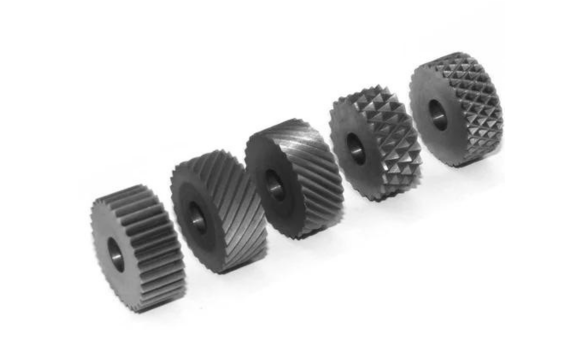
Operation
- Align the wheel appropriately relative to the workpiece to achieve a uniform pattern avoiding distortion and/or double tracking.
- Adjust the pressure to determine the desired pattern depth without applying excessive force that can result in deformation.
- Use coolant to reduce friction and overheating thus reduce wear and tear and extend tool life.
Pattern Types
- Straight Knurling: Simple and straightforward pattern consisting lines parallel to the workpiece’s axis.
- Annular Knurling: The pattern is circular usually serving decorative purpose.
- Diagonal Knurling: Lines are at an acute 45-degree angle to the workpiece axis resulting in a decorative herringbone pattern.
- Diamond Knurling: Features crisscrossing lines making up diamond shapes offering a firm grip surface.
Material
- Tool Steel: Highly durable and hard, effective on soft materials like brass and
- Carbide: Displays incredible hardness and resistance to wearwith an extended tool life ideal for working on tougher materials like steel.
- High-Speed Steel: Exhibits wear resistance and toughness capable of tolerating high temperatures resulting from high-speed operations.
Types
- Single-Wheel: Utilizes one knurling wheel in patterning workpieces making it simple and cost-effective.
- Double-Wheel: Features a double wheel pairing working from opposite endsthus balancing the forces in pressing the
2. Knurling Dies
Similar to knurling wheels, knurling dies impress a patterned design onto a workpiece surface to high precision. However, rather than have a rotating workpiece, you utilize knurling dies in press operations. This allows you to achieve the same pattern across many parts useful in high-volume productions.
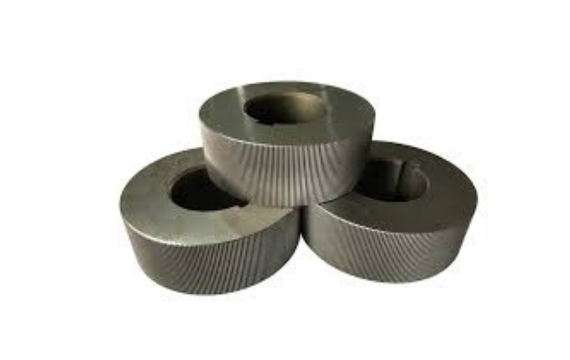
Operation
- A die presses against the workpiece in a press with significant force to imprint the pattern. The force applied on the press determines the pattern depth ensuring precise control.
- Align the die to our workpiece as desired for uniform pattern application, otherwise it may result in defects like uneven patterns.
- Apply just enough pressure to not damage the workpiece but result in defined pattern.
Advantages
- Achieves high precision producing the desired patterns consistently ideal for mass production.
- Executes the imprinting process rapidly enhancing efficiency in terms of production time especially with large volumes.
- You can implement a diverse pattern range of varying complexities from simple straight lines to complex, custom designs.
Maintenance
- Carrying out frequent inspection will help catch wear early before it deteriorates pattern quality.
- Always clean the die after use to prevent debris buildup which can hamper the embossing process affecting quality.
- Apply lubrication to your die opening and press ends to minimize wear due to friction and maintain high standard finish.
- Frequently sharpen the die edges to ensure consistency in effecting knurling patterns over a longer period.
3. Floating Knurling Tools
The design of floating knurling tools allows you to work around surface irregularities and variations in the diameter of the workpiece. These tools, don’t need precise alignment and pressure and instead allow readjusting movements toaccommodate misalignments.
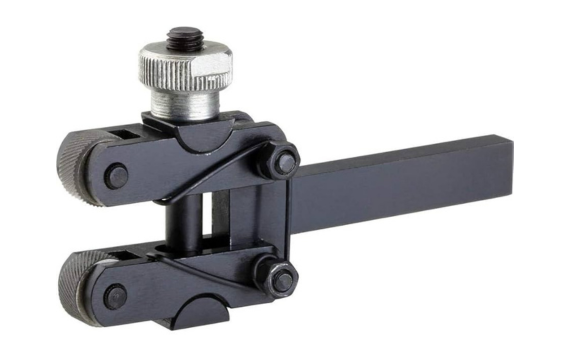
Operation
- Mounting floating knurling tools in a tool holder allows some extent of lateral movementvia a spring structure with pivoting capabilities.
- This way, you can achieve a uniform pattern with minimal force application more so when working with irregular workpieces. This prevents deformation and defects like uneven patterns and double tracking.
- The wheels attached to a floating knurling tool imprint the desired pattern to the piece. Floating allows the wheels to maintain contact with the piece throughout.
Advantages
- By maintaining consistent pressure these tools achieve consistent pattern formation on the workpiece reducing occurrence of defects.
- Floating eliminates chance of excessive force application that could damage the piece especially when working on delicate materials.
- This tool supports impression on workpieces of diverse materials and sizes
- Setting up floating knurling tools is simple owing to their flexibility in adjusting toworkpiece measurements.
Applications
- Effective when working on thin-walled parts susceptible to damage when excessive force is used.
- Ideal in high-volume manufacturing owing to its consistent knurling quality on repetition of operations.
- Suitable for non-similar workpieces featuring diameter variations and/or surface irregularities requiring tool adjustment for uniform execution.
- Perfect for industries demanding consistency and high precision such as automotive and aerospace.
4. Knurling Inserts
Knurling inserts are unique cutting tools you use to create patterns directly on a workpiece by inscribing. You utilize a lathe or CNC machine making it a turning operation. As a result, you can consistently and repeatedly achieve precise control when undertaking a knurling operation using inserts.
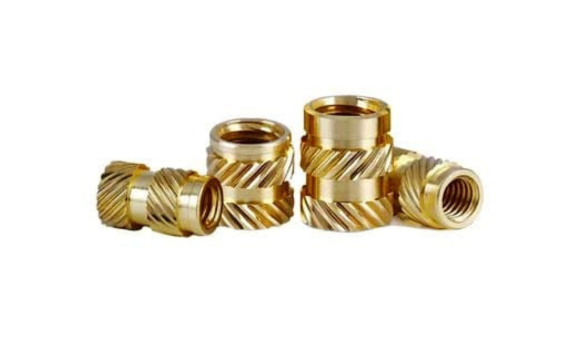
Operation
- Mount a knurling insert onto a lathe or CNC machine’s tool holderfrom where you interact it with a rotating workpiece.
- Ensue you properly align the workpiece for uniform application of the pattern.
- Use appropriate speed and feed rate to ensure you imprint the pattern in the desired formation.
- When using cutting approach, use slower speeds to obtain a more impressive cut.
- Always apply coolant to the point of interaction between the tool and workpiece to reduce friction and regulate tool wear.
Types
- Cutting Knurling Inserts: Cut out material from the workpiece surface to achieve the desired knurling pattern. Ideal for workpieces with hard material and intricate patterns. Has low chance of deformation owing to less force application.
- Forming Knurling Inserts: Precisely impresses the pattern over the workpiece without material removal. Suitable for soft workpieces resulting in superior finish with minimal wear.
Material
- High-Speed Steel (HSS): Favored for standard knurling inserts offering decent hardness and toughness.
- Carbide: Ideal for knurling inserts used for harder materials thanks to its superior hardness and resistance to wear. Offer an extended tool life providing excellent performance in high-speed operations.
- Coated Inserts: Coat material like steel with titanium nitridewhich protects the tool from wear and friction effects.
Advantages
- Using a lathe machine allows you precise control over the process making it highly repeatable and consistent.
- With knurling inserts, you achieve precise cut parameters like depth and pitch and thus high quality finishes.
- Use of knurling inserts is characterized by less pressure application on the workpiece reducing occurrence of deformation. This is especially useful when working on hard materials.
- You can achieve a diverse pattern range when using knurling inserts including custom patterns.
- The surface finish you obtain is usually superior compared to other knurling tools.
Application
- Best for high-precision or tight machining tolerance components like those use in vehicles, medical devices and aircraft.
- Ideal for working on hard materials like steel and its alloys.
- Suited for delicate workpieces such as those with thin walls with higher chance of deforming under pressure.
- Where the desired knurling pattern is complex for other tooling systems.
5. Push-Type Knurling Tools
Push-type knurling tools apply direct pressure to the workpiece surface to create a knurled pattern. This is by pushing the knurling wheels against a rotating workpiece. the force deforms the workpiece in the desired pattern.
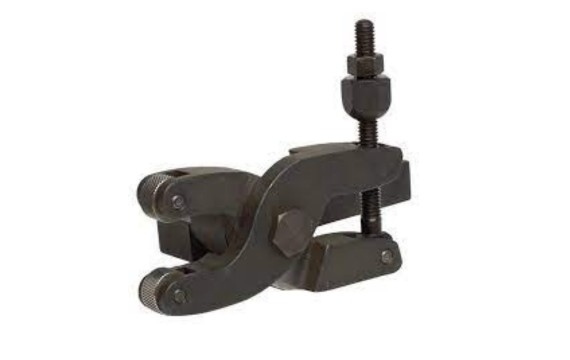
Operation
- A tool holder is mounted to the lathe, positioning the knurling wheels containing the desired pattern appropriately.
- With the workpiece rotating, the wheels pushagainst its surface exerting just enough pressure for deformation in desired pattern.
- Determine the desired sharpness and depth by adjutant the applied force. Too much pressure can damage the tool and workpiece.
- Check alignment to ensure uniform application of the pattern.
Types
- Single-Wheel: Feature a single knurling wheel effective in straightforward applications with simple pattern.
- Double-Wheel: Consists a pair of knurling wheels usually operating simultaneously and effective for complex patterns. Configuration is such that the wheels are opposite to each other for balance.
- Adjustable: Allows you to intervene in operations by adjusting wheel position and pressure. This is ideal when using different materials or applying different patterns with different depth levels.
Advantages
- Push-type knurling tools are simple to use requiring minimal setup and are easily adjustable.
- You can use these knurling tool on a diverse range of materials including plastics and metals like steel and aluminum.
- Are durable with minimal maintenance requirements lowering overall operating costs.
- Can be used in manual as well as CNC lathes.
Conclusion
Consider your material and intended knurling pattern when selecting the appropriate knurling tool to achieve the desired outcome. To benefit from an extended service life from your knurling tool, undertake regular inspection and maintenance of your tooling system.




